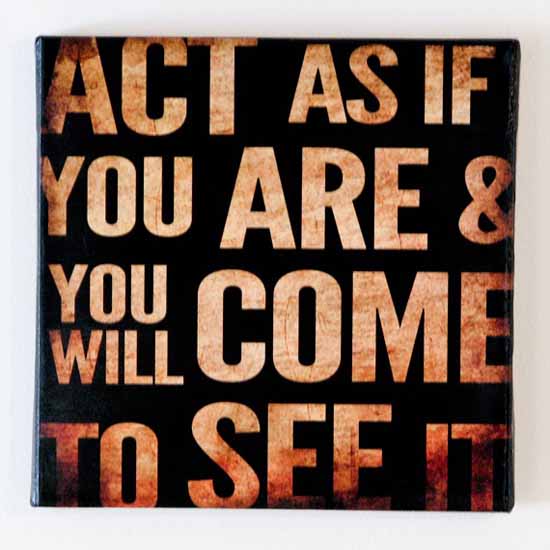In my latest blog post (“Leading with Compassion and Authenticity,” February 18) I wrote about a favorite leadership book, “Leading with Authenticity in Times of Transition” by Kerry Bunker and Michael Wakefield. As a continuation of that post, I want to share the specific leadership competencies highlighted in the text that are critical for leaders navigating the complex challenges of transition. These competencies are presented as pairs (representing both the structural and people side) and graphically displayed as a wheel to demonstrate their interrelatedness and the need for balance.

Bunker and Wakefield use the image of a bicycle wheel to describe the leadership competencies, reflecting that each spoke needs to be tightened or loosened to the right tension. Otherwise, there will be strain on the other spokes, pulling the wheel out of alignment. Six spokes represent the structural competencies, and six the people-related competencies. If a leader devotes an overabundance of energy to any one competency, s/he runs the risk of skewing the opposite and pushing the wheel out of true, creating undue strain on the trust needed to lead effectively. The key is to find appropriate ways to work with both sides that are authentic to the leader and avoid swinging dramatically from one side to the other.
I find this resource very helpful in conceptualizing the core elements important to navigating change and transition as well as the need for balance among them. Most leaders are quite skilled at dealing with change and solving problems from the structural side of leadership – the plan, rationale, data, and measurements. Posing a much greater challenge for most is connecting to the people side of change – the emotions, discomfort, letting go, and rebuilding. Central to it all is trust, without which success in transition cannot exist.
Consider this example: A nonprofit arts organization had recently undergone a strategic planning process that included extensive community input data gathering. This led to a reshaping of priorities and key areas of focus for the organization, which re-defined its core lines of business. As a result, the organization ceased two primary areas of its operation. From this redefining, the organization aligned its leadership, resources, business strategy, and culture to support this new model. Among other things, the action led to a redesign and reduction in both board and staff leadership. By any measure, this was substantial change to this agency.
A true test for the organization was how it dealt with the more emotional side of the human elements of transition. While they handled the mechanics of the change well: strategy, planning, gathering community input, and defining core areas of focus and lines of business, the organization fell short in leading the more human dynamics of the transition: allowing for time and space for emotional processing, feeling discomfort, dealing with resistance, and appreciating differences in how people cope with change and taking those perspectives into account.
I see this frequently with the organizations and executives with whom I work. Strategic planning processes like these take a lot of time, effort, and energy. When a plan is done, it’s easy to feel like you’ve reached the finish line. It’s much harder to realize you’re only half or two-thirds finished, and that a critical component of your work is yet to be done – addressing the more sensitive people issues and empowering a team to embrace the change and help shape and lead the future.
As Bunker and Wakefield note, “change initiatives often break down because people stall somewhere during the transition.” Ignoring or falling short in this area will greatly impact the overall success of a transition. With the organization example above, the ‘less than ideal’ handling of the human elements created a turbulence that was felt for years after. These missteps are painful to recover from.
A highly skilled leader lives through the process of transition with others in a genuine and authentic way. They help their people flex and adapt, and foster their ability to contribute in new and meaningful ways. Here’s an overview of the twelve competencies:
Catalyzing Change versus Coping with Transition
Catalyzing Change is championing an initiative or significant change. A leader who is skilled at catalyzing change consistently promotes the cause, encourages others to get on board, and reinforces those who already are. Such leaders are highly driven and eager to get others engaged in new initiatives.
Coping with Transition involves recognizing and addressing the personal and emotional elements of change. Leaders who are able to cope with transition are in touch with their personal reactions to change and transition and make use of that emotional information. They lead by example.
Sense of Urgency versus Realistic Patience
Sense of Urgency involves taking action quickly when necessary to keep things rolling. Leaders who have a strong sense of urgency move fast on issues and accelerate the pace for everyone. They value action and know how to get things done.
Realistic Patience involves knowing when and how to slow the pace to allow time and space for people to cope and adapt. Leaders who display realistic patience appreciate the fact that people learn and deal with change differently and do not judge them based on their own styles, preferences, or capabilities.
Being Tough versus Being Empathetic
Being Tough denotes the ability to make difficult decisions about issues and people with little hesitation or second-guessing. Leaders who are comfortable and secure with themselves can display toughness; they’re not afraid to take a stand in the face of public opinion or strong resistance.
Being Empathetic requires taking others’ perspectives into account when making decisions and taking action. Empathetic leaders try to put themselves in other people’s shoes; they’re able to enhance their own perspectives by considering the views of others.
Optimism versus Realism and Openness
Optimism is the ability to see the positive potential of any challenge. Leaders who exude optimism can communicate and convey that optimism to others.
The combination of Realism and Openness denotes a grounded perspective and a willingness to be candid. Leaders who practice this competency are clear and honest about assessing a situation and the prospects for the future. They are candid in communicating what is known and not known. When managers exhibit realism and openness, they speak the truth, don’t sugarcoat the facts, and are willing to admit personal mistakes and foibles.
Self-Reliance versus Trusting Others
Self-Reliance involves a willingness to take a lead role and even to do something yourself when necessary. Self-reliant leaders have a great deal of confidence in their skills and abilities and are willing to step up and tackle new challenges.
Trusting Others means being comfortable with allowing others to do their part of a task or project. A leader who trusts others is open to input and support from colleagues and friends. Such leaders respect others and demonstrate trust through a willingness to be vulnerable with them.
Capitalizing on Strengths versus Going Against the Grain
Capitalizing on Strengths entails knowing your strengths and attributes, and confidently applying them to tackle new situations and circumstances. A leader who knows how to capitalize on strengths trusts the abilities that have generated success, rewards, recognition, compliments, and promotions in the past and uses them in new situations.
Going Against the Grain entails a willingness to learn and try new things, even when the process is hard or painful. Leaders who can go against the grain are willing to get out of their comfort zones. They are willing to tolerate discomfort if it leads to learning.

I don’t know about you, but when I read these competencies, I see that there are some inherent conflicts between them. In the face of change and turmoil, it’s interesting that people look for those who are simultaneously strong and vulnerable, heroic yet open, demanding while compassionate. Leading well often feels like an impossible balancing act. It can be exhausting!
For me, I think it’s most about knowing yourself as a leader. Knowing what is genuinely, authentically you and applying that consistently and well over time. And when you have those critical learning moments, take the new discoveries and further polish and refine your leadership skills.








